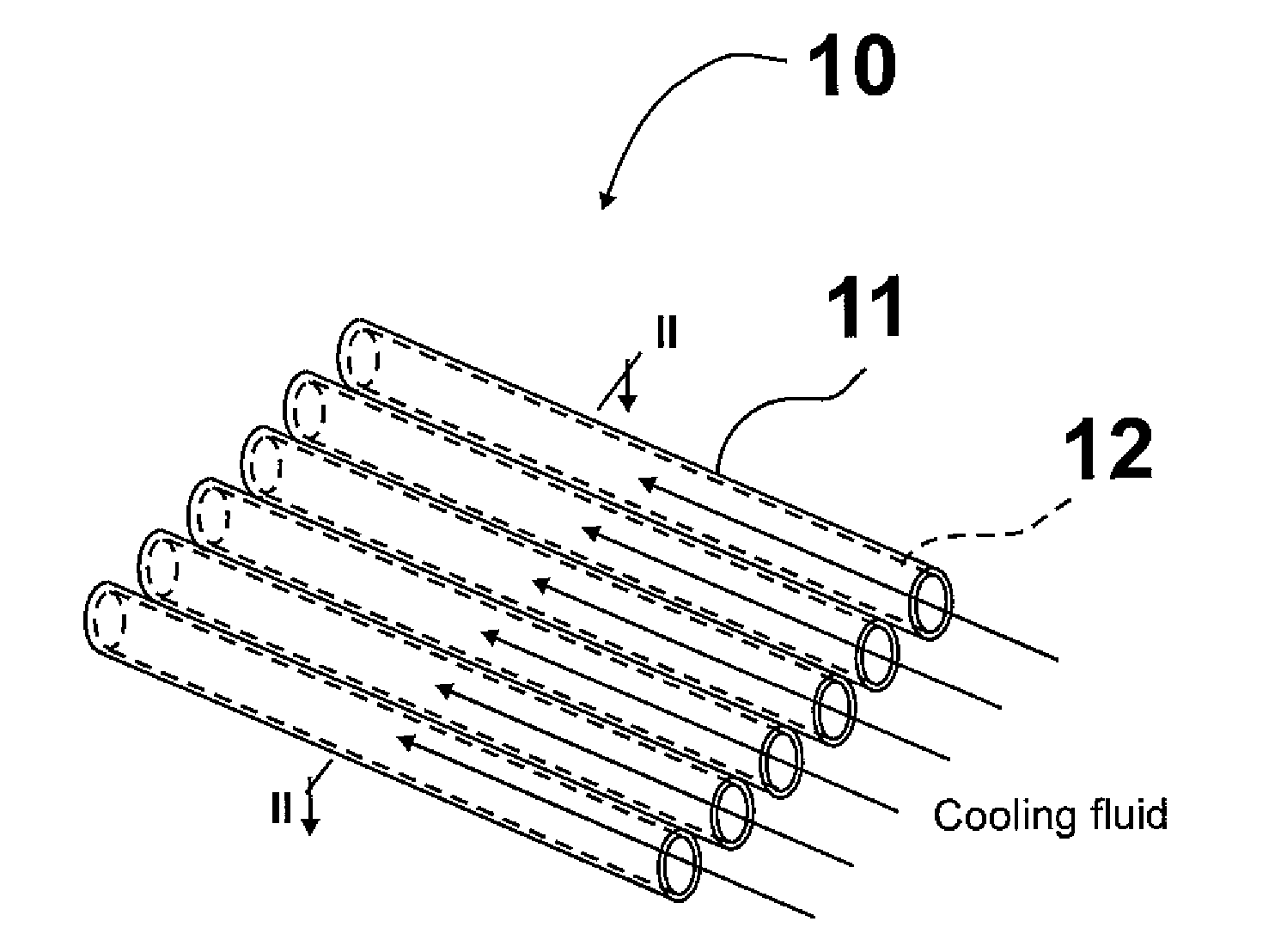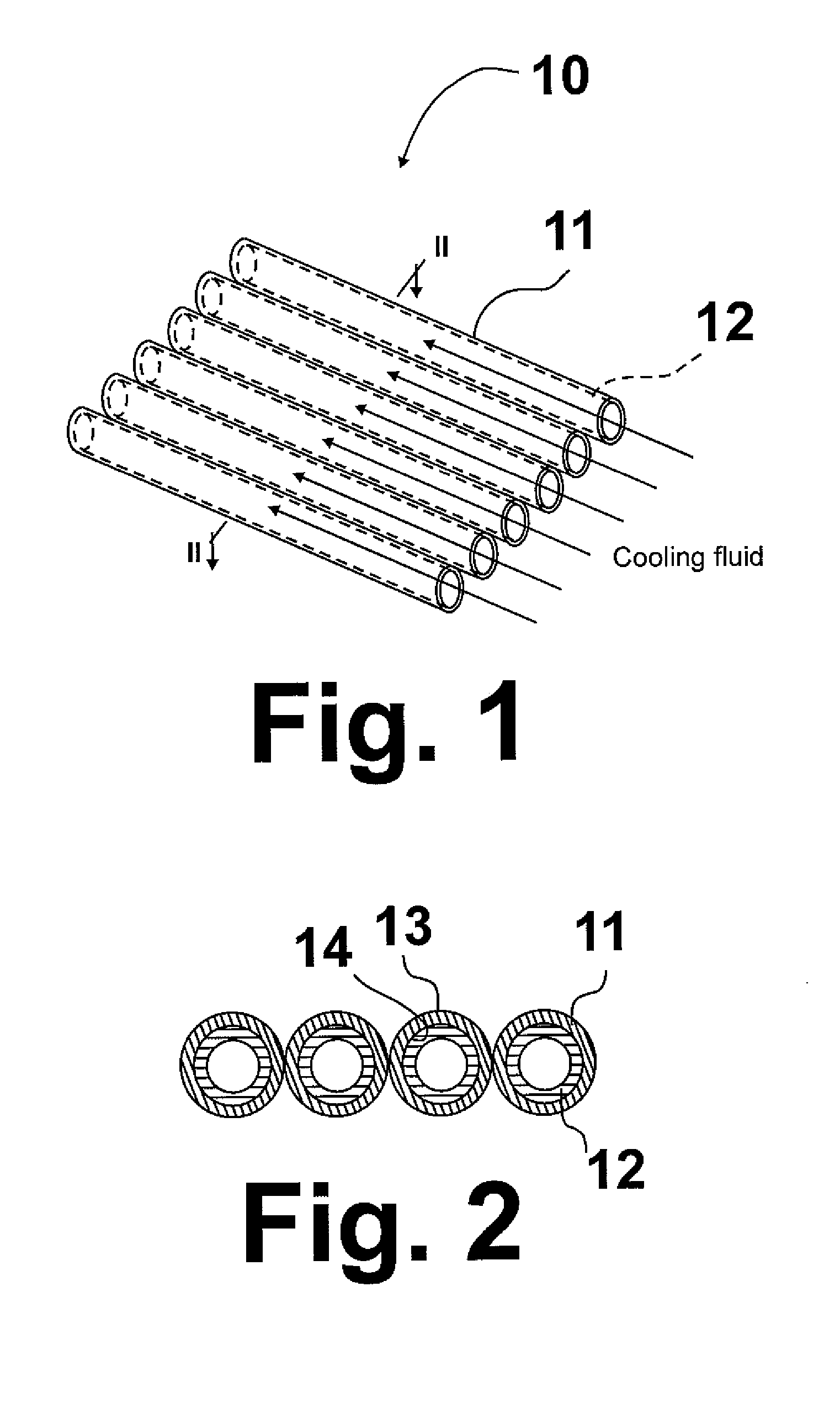Supported metal membrane with internal cooling for h2 separation
a metal membrane and h2 separation technology, applied in the direction of membranes, separation processes, dispersed particle separation, etc., can solve the problems of unavoidably necessary choice between a high separation factor and a high gas permeability, limited material selection for hydrogen separation, etc., to achieve high selectivity, manage the thermal stability of the composite membrane, and achieve high surface area
- Summary
- Abstract
- Description
- Claims
- Application Information
AI Technical Summary
Benefits of technology
Problems solved by technology
Method used
Image
Examples
Embodiment Construction
[0019]This invention combines the high selectivity to H2 permeation obtainable with a thin metal film with the high surface area achievable with a polymeric membrane. The invention disclosed herein, as shown in FIGS. 1 and 2, is a composite membrane 10 comprising a H2 gas permeable metallic membrane 11, also sometimes referred to as a metallic film or metallic foil, having a gas contact side 13 and a gas permeate side 14, supported on porous hollow fibers 12 disposed on said gas permeate side, which hollow fibers are open on both ends thereof. To maximize available surface area for H2 gas permeation, each of the hollow fibers 12 may be coated with a suitable metallic membrane material. It will be appreciated that the metallic film or metallic foil may be disposed on the inside surface of the porous hollow fibers, and such embodiments are deemed to be within the scope of this invention.
[0020]The metallic membrane is made from a class of materials capable of permeating H2 gas. As used...
PUM
 Login to View More
Login to View More Abstract
Description
Claims
Application Information
 Login to View More
Login to View More - R&D
- Intellectual Property
- Life Sciences
- Materials
- Tech Scout
- Unparalleled Data Quality
- Higher Quality Content
- 60% Fewer Hallucinations
Browse by: Latest US Patents, China's latest patents, Technical Efficacy Thesaurus, Application Domain, Technology Topic, Popular Technical Reports.
© 2025 PatSnap. All rights reserved.Legal|Privacy policy|Modern Slavery Act Transparency Statement|Sitemap|About US| Contact US: help@patsnap.com


